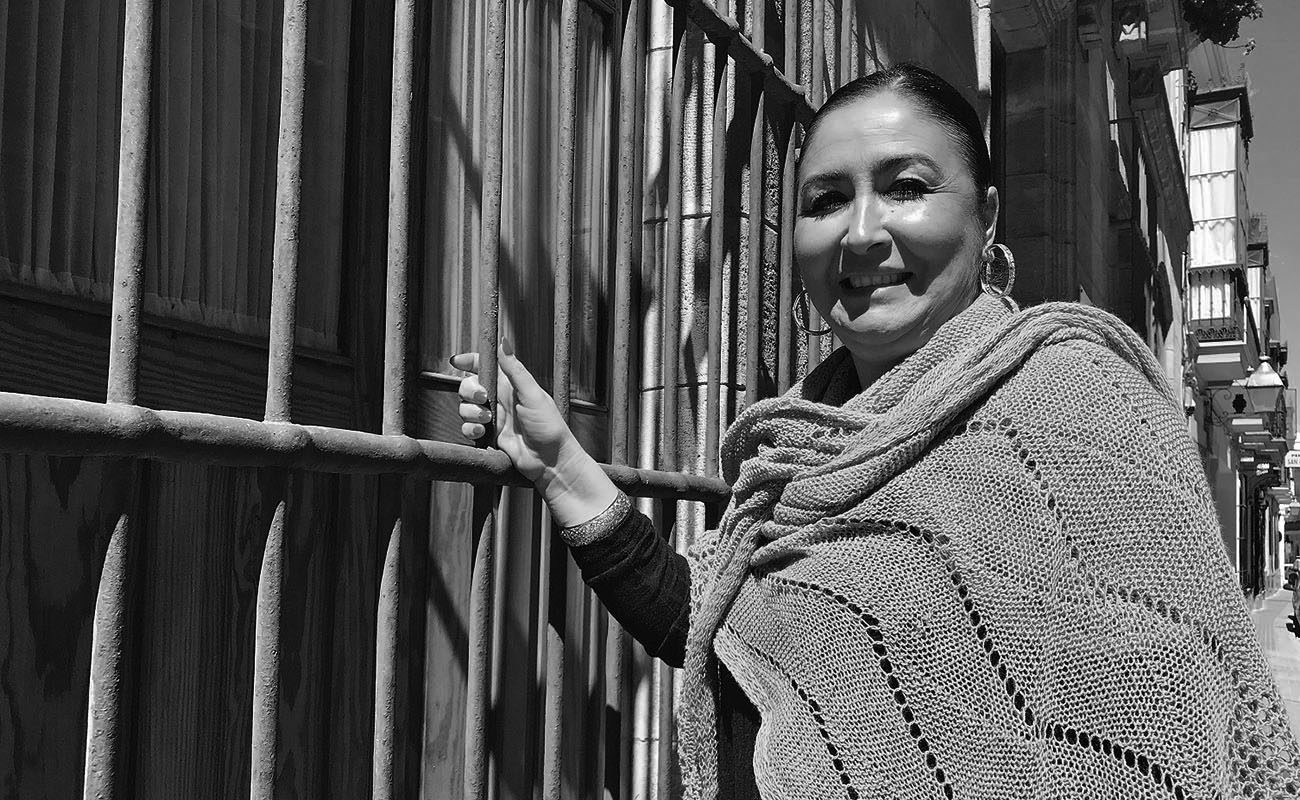Manuela Carpio: that amazing girl
If she’s willing to thrill us again, let’s her do so. Let the prodigy girl of Moneo and Carpio amaze us again and daze us with emotion, now with a well-aged sweet aftertaste.

Are these days good days for baile? Some say yes, others say no. In the last forty years I’ve watched performances of forty or fifty great bailaoras, from Matilde Coral to all of today’s youngsters. I never had the chance to watch Trini España performing live, I have only watched videos of her, and I think she’s amazing, a perfect combination of elegance and Sevillan flamenco feel. I have always liked bailaoras who are able to give a unique dimension in a single performance, that’s a gift from the gods. Matilde has been encyclopedic in baile, such as Mairena has been in cante or Montoya in guitar. Yet, I want to highlight those who have thrilled me by bulerías, since these days very few are good in this very difficult baile, which has been deplorably vulgarized. I remember magical moments of Tía Juana la del Pipa. This Gypsy from Jerez danced without embellishments, her footwork was amazingly natural and her arm movements were like no other. She was spectacular because of her simplicity, not because of jumps or stomping on the stage to the breaking point. In those days I enjoyed many times performances by non-professional bailaoras from Triana, from Cava Gitana, such as Pepa la Calzona, related to Juan Pelao, the celebrated martinetero.
One night in Seville, at the Lope de Vega theater, I discovered a girl from Jerez, Manuela Carpio Moneo, who performed in Manuel Morao’s Company. That was about thirty-five years ago (so Manuela would have been around twelve). She only danced for two minutes and she got all in the theater standing up. After that night, I watched her perform many other times, in shows such as La fragua del Tío Juane or Esa forma de vivir. Then I lost track of her. I only saw her again in some TV shows. She had been focusing on teaching, but now she wants to get back to the festivals, after dazing the public in the last Fiesta de la Bulería de Jerez. That’s good news, no doubt, because in the festivals I miss that way of dancing, that school, which has inexplicably disappeared, giving way to the so-called contemporary school, which is fundamentally based on technique. That’s also baile flamenco, but a different kind. I wouldn’t say it doesn’t have a soul, because there is no flamenco without soul, that would be impossible. Yet, the contemporary school is a school of pose, of tiring choreographies that only seek plastic beauty and pleasing the public.
Manuela Carpio remains a bailaora of tradition and class, pure to her roots, having a supernatural strength and preserving the essence of the school of Jerez, which is unique and has been shaped through the years by the great bailaoras of that land, professionals or not. I think that both schools, the classic and the contemporary, can live together in harmony, as they always had. La Argentinita created Las Calles de Cádiz, a historic production, to allow both forms to coexist, that’s why she took with her three outstanding bailaoras from Jerez such as La Macarrona, La Malena and Fernanda Antúnez, contrasting their classic styles with the more modern styles of her sister Pilar López and herself. A century earlier, bolero dancers lived in perfect harmony with flamenco dancers. Yet, to forget the bailaoras who still keep the classic forms and that special Andalusian way of dancing (Gypsy or not), is to give up all that has made flamenco dance such a unique art in the world. That’s why I celebrate the fact that Manuela Carpio is again interested in dancing at the towns’ festivals, at the Cultural Weeks’ events, and at the international festivals. Because that emotion, that almost wild way of dancing lo jondo, is being sorely missed. Manuela never left, she combines teaching with performing, but her performances have been too sporadic. If she’s willing to thrill us again, let’s her do so. Let the prodigy girl of Moneo and Carpio amaze us again and daze us with emotion, now with a well-aged sweet aftertaste.
* This article was originally published in ExpoFlamenco on November 27th, 2015 / Photo by Juan Garrido





